15 Different Types of Scissors & Their Uses
Author: Jen Worst | Editor: Omar Alonso
Review & Research: Jen Worst & Chris Miller
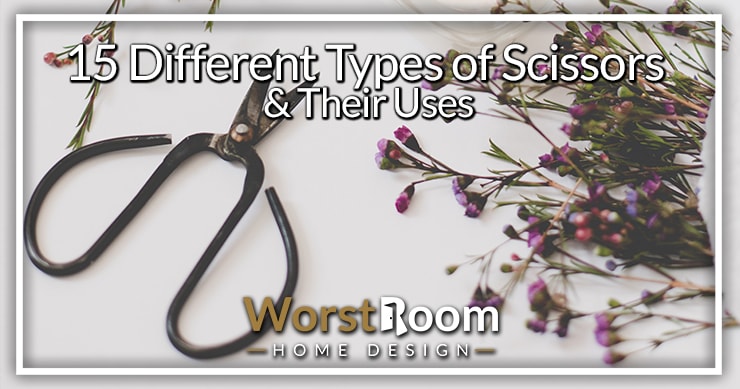
There are types of scissors for every need. Many industries found that if they tweaked the design of common shears, they could work faster, more accurately, and more easily.
There is a perfect pair of scissors for almost every task that requires you to use one. And it’s great to know what specific scissor types to use to make your life easy and results better.
If you’re not convinced, think about it this way... You wouldn’t use a nail where a screw belongs, would you? Let's look at the various kinds of scissors and why they even exist.
15 Types of Scissors
Scissors, as invented in the 14th century BC by Jean-Claude Margueron of Emar, work using the law of levers. The blades, fulcrum, and handle allow you to provide tremendous shearing pressure to a material, separating it from itself at a molecular level in some cases.
There's no specific order here, so please scroll them all to make sure you aren't missing out on exactly the kinds of scissors you need. Again, there are scissor styles for nearly every main type of task we need them for.
1) Standard Scissors
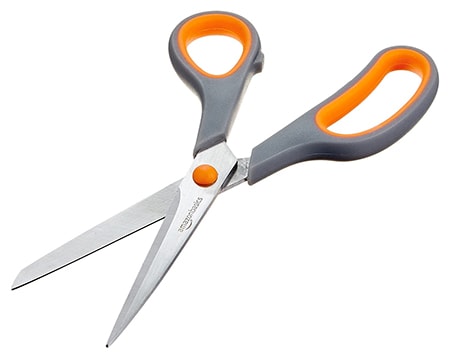
These are the most common types of scissors and can be used for most office jobs. They're simple and basic with straight blades that works well with the one-size-fits-all handles.
And if you keep using them on similar materials, you don’t have to work too hard to keep the blades sharp either. These are commonly for cutting paper, cloth, strings, and other common household or office materials. They even come in a child proof style found in schools.
2) Embroidery Scissors
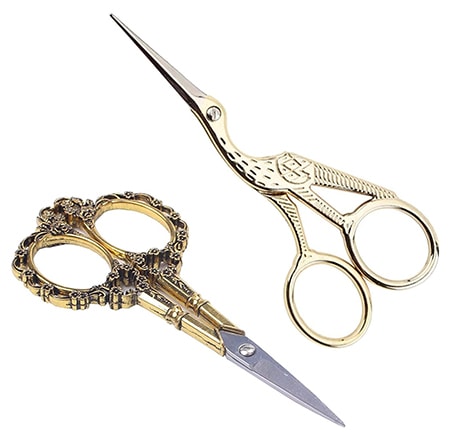
These scissors are small and delicate with the appearance of the ones you'll find in a surgeon’s office. As the name suggests, they're the perfect choice for the little snips that you need to make while working on embroidery work.
These blades are pointed and slide in between threads quite efficiently, letting you do precision work. This is particularly useful when you need to separate them for a specific kind of cut.
These scissors are very helpful when in hand sewing and their efficiency increases when you tie them to a ribbon and hang them around your neck so that you don’t have to keep looking for them.
3) General Craft Scissors
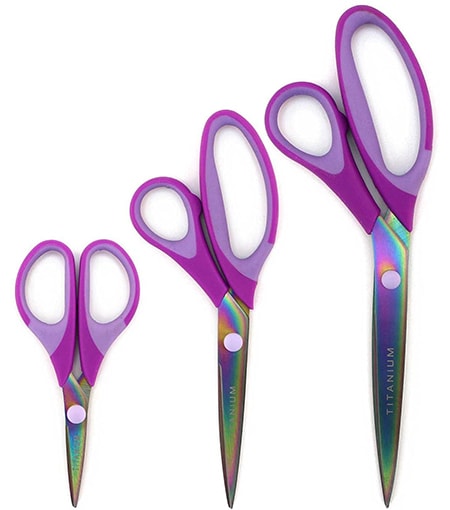
This is for those who like arts and crafts. They look like your standard scissors but they're cheap and found anywhere. General craft scissors are tough and can handle a good bit of abuse.
But they're not the most durable variety and hence the affordability. Typically a craft room will have several pairs of these scattered about the room so they're always easily accessible.
They're also used to open paint cans and cut jewelry that has wires. You can also improvise and use them to cut clay without worrying about the damage.
The way to figure out when it’s time to cut the cord is to look for cuts that are no longer straight, leaving behind jagged parts on paper, signaling that the blades have been bent or knicked. Even then, you can use them for little tasks like cutting fresh flowers and opening rice bags, etc.
4) Decorative Scissors
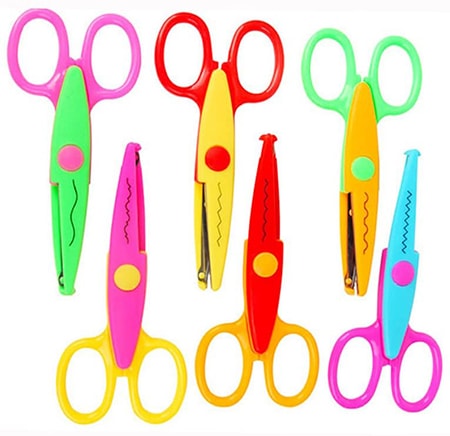
Decorative scissors are great for cutting patterns, whether that's a wavy one or a bubble edge. These scissors have plastic handles and a small metal blade for your convenience. They greatly enhance efficiency and cut down on time while doing little art projects.
For instance, if you’re looking to cut a lot of burlap, using the wrong types of scissors will make it that much harder and longer. Not to mention the strain on your hands when using the wrong kinds of scissors over an extended amount of time.
It's important to keep them sharp but these scissors hardly become dull from simple cuts on the materials they're designed for. Use them right and they'll be around for decades to come.
5) Thread Snips
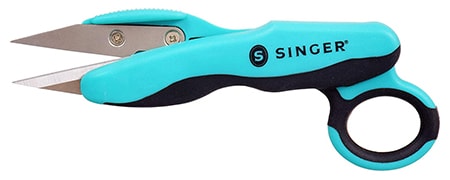
These are predominantly used in sewing. They come with a spring-loaded handle and are great for repetitive cuts like those on the edges of tied up fleece blankets. If you’re looking to make long cuts, you will be disappointed. That’s why it pays to pay attention to the name.
When you have to make a lot of little cuts, these scissor styles are just what you need. They're also extremely helpful to those who have health issues like arthritis thanks to the handle.
6) Dressmaker’s Shears
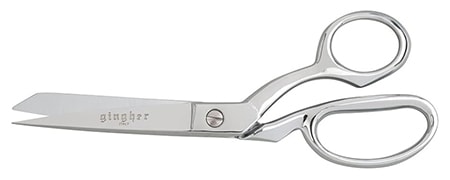
Sewing and creating clothing from scratch requires you to cut through a range of fabrics. It takes a lot of work and you need something with a sharp and long blade. That blade is tapered by a round and smooth tip which helps you avoid the sagging of seams and threads of fabric.
Dressmaker’s shears are also great for clipping and notching curves. This pair of scissors have edges like knives and the blade on the top lets you cut through fabrics rather effortlessly when compared to a standard pair.
Note that the lower blade is meant to sit flush on the surface of the table to make cutting through a fabric even more accurate. You don’t want to compromise on that. The handle is smooth and makes it easy to work on a tabletop or a counter.
The ideal length of these shears is 7 to 10 inches and it's preferred by those who need to cut through multiple layers, saving even more time. Among the different types of scissors and their uses, these are specifically designed and do their job quite well.
7) Pinking Shears
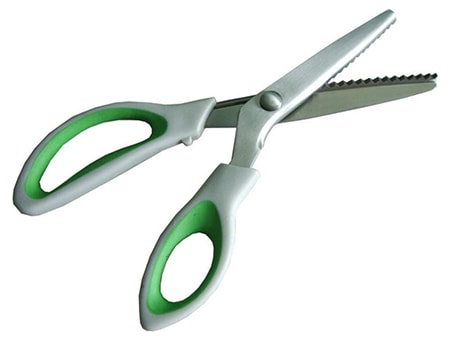
These are another kind of sewing scissors with a unique pair of jagged blades that are excellent when you need to create a zigzag edge while cutting fabric. It's a snipping tool that helps avoid fraying along the ridges of any fabric.
The saw-like edges also equip you with a better grip for slippery pieces of cloth. And the handle has a curve to make it easier to cut while the equipment is on a flat surface.
These scissors, designed in the 1930s, don't have straight, razor-sharp blades like most of the other models. They're also great when cutting woven cloth because they stop the edges from fraying by jagging the edges. This keeps the weave intact even when it's not sewn.
The pattern on the blade also keeps the fabric from fraying by restricting the tattered threads but only till you find a permanent fix. But until then, they help with damage control. These scissors are also great for decorative cutting, but don’t use them on paper if you want the blades to stay sharp.
8) Buttonhole Scissors
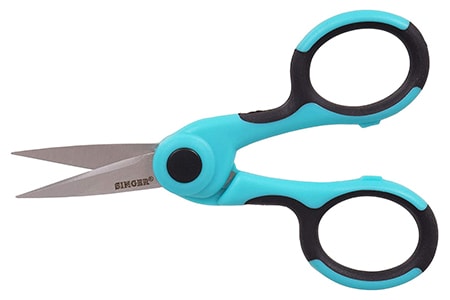
These scissors typically have two blades (of course). The one on top has a blunt end and the second blade has tapered edges and an outer edge.
Both blades are short and easy to adjust. These are heavy-duty scissor types with a handle that has a pivot which makes it easy for you to open up buttonholes in fabric.
9) Appliqué Scissors
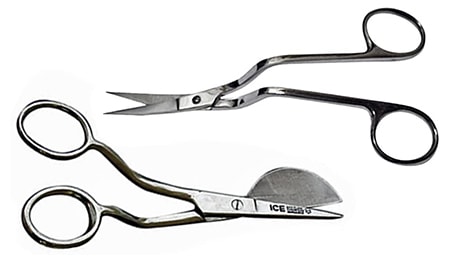
These scissors have unique blades that are in the shape of a paddle which makes it easy for you to identify them in the store. They're very useful when you're cutting the bottom layer along the seam of a fabric.
They're made to cut and trim without causing any damage to the rest of the fabric. Appliqué scissors are quite popular among rug makers regardless of the types of rugs being made.
10) Ambidextrous Scissors
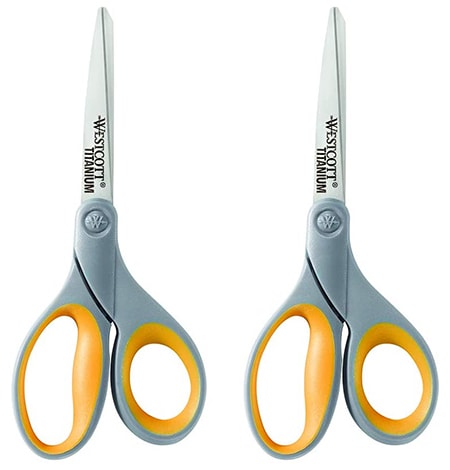
These have become popular only in the recent years and have made life very easy for left handers and ambidextrous people. Who'd have thought it'd have taken this long to accommodate everyone?
This is made possible thanks to the symmetric handles that don't differentiate between the spot for the thumb and the rest of the fingers unlike almost every other model of scissors.
Apart from the handles, they also have strong pivots that help the blade rotate instead of moving laterally. There's nothing worse than loose scissors.
11) Hedge Shears
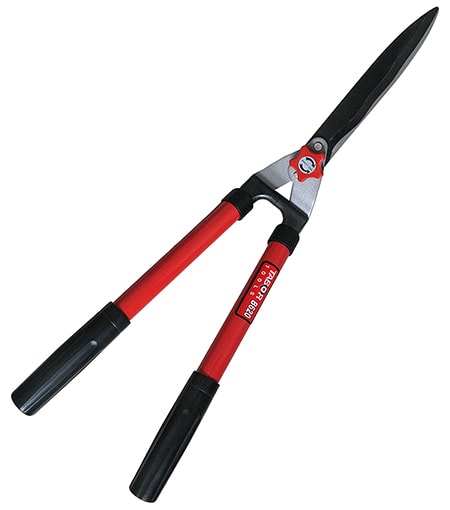
Scissors are a very important part of gardening, too. Hedge trimmers are a common tool in most every household. They're used for cutting and snipping shrubs and bushes along with light trimming.
These kinds of scissors come in many sizes and designs. Which ones you want to get depends on the size of your garden. And you can get manual or powered trimmers. The powered ones resemble hair clippers and are leaving the realm of being "scissors".
You can find many variations of these, meant to cut branches, prune roses, and any number of other yard work and gardening activities.
12) Grass Shears
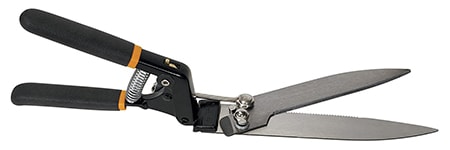
This is another coveted gardening tool. They have long handles that are perpendicular to the blades. They're used in cutting and pruning grass (traditionally) without having to turn your hand sideways.
You can get them with horizontal or vertical blades, depending on your comfort, though horizontal is the main reason to buy them.
The shears with horizontal blades are used to remove grass after you run your mower on it. And the ones with vertical blades are used to trim the boundaries of your lawn. Really, these days people use them to do precise hedge trimming and shrub management.
The latter model with a long lever on the top and a handle was designed in the late 1930s. It also had wheels at the bottom to allow the gardener to maneuver tricky corners in driveways.
These have now been replaced with power trimmers which are easier and quicker to use, but they're still useful for tons of similar tasks.
13) Hair-Cutting Scissors
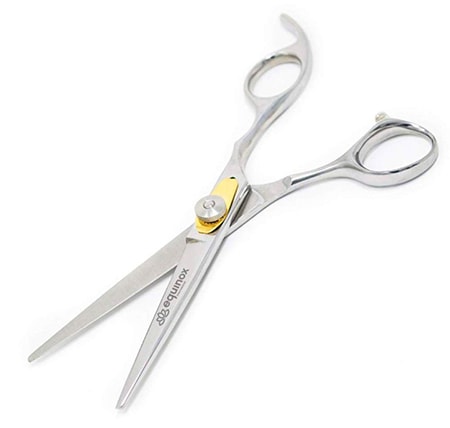
If we’re talking about scissors there’s no way we can leave out snips that are used for grooming and hygiene. These are designed to cut and trim human hair and are found in every salon.
Also called barber shears or hair-dressing shears, they're so much sharper than any other pair of scissors so great care needs to be taken around the ears.
The most commonly used models have blades that are anywhere from 5 to 7 inches in length. They also have a finger brace or a tang attached to the finger loops so that the user has more control. Only use them on hair or you'll find them going dull.
14) Kitchen Scissors
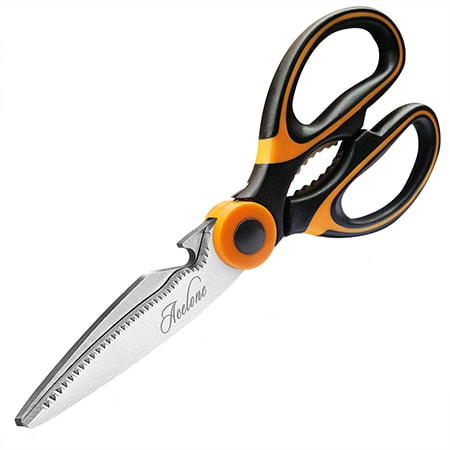
Everyone should have this necessary culinary tool, and not only for cutting open food packaging. Kitchen shears do the same job as a decent chef's knife but can do it faster, especially with cutting meat.
But that's not all they're for. You can snip herbs, size down poultry, and some even have screw cap and jar lid openers between the handles as well as a bottle opener. Those same openers can be used to crack nuts and shells, like walnuts and crab legs. I've yet to see any with any types of can openers on them though!
Some even come with screwdriver attachments on the back so you can tighten your drawer pull handles if they're loose, etc. Good ones can even be disassembled for easy cleaning. Everyone should have a one of these!
15) Trauma Shears
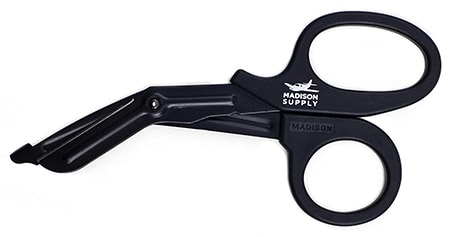
Also called tuff cuts, these are used by paramedics and nurses to cut off the clothing of a patient. These scissors have a plastic handle and a long arm.
The blades are usually bent at a 150-degree angle and have a wide and blunt tip which is meant to help avoid piercing the skin. They're made strictly for external use only and are extremely efficient at their job.
Which Types of Scissors Do You Need?
You can also find many other varieties like pruning shears that are used by gardeners, farmers, and nature conservators or hair clippers that are pretty much like scissors or bandage scissors used in the hospital.
Each of these types of scissors has a specific purpose and identifying that and matching it with your needs is the best way to get the job done comfortably.



